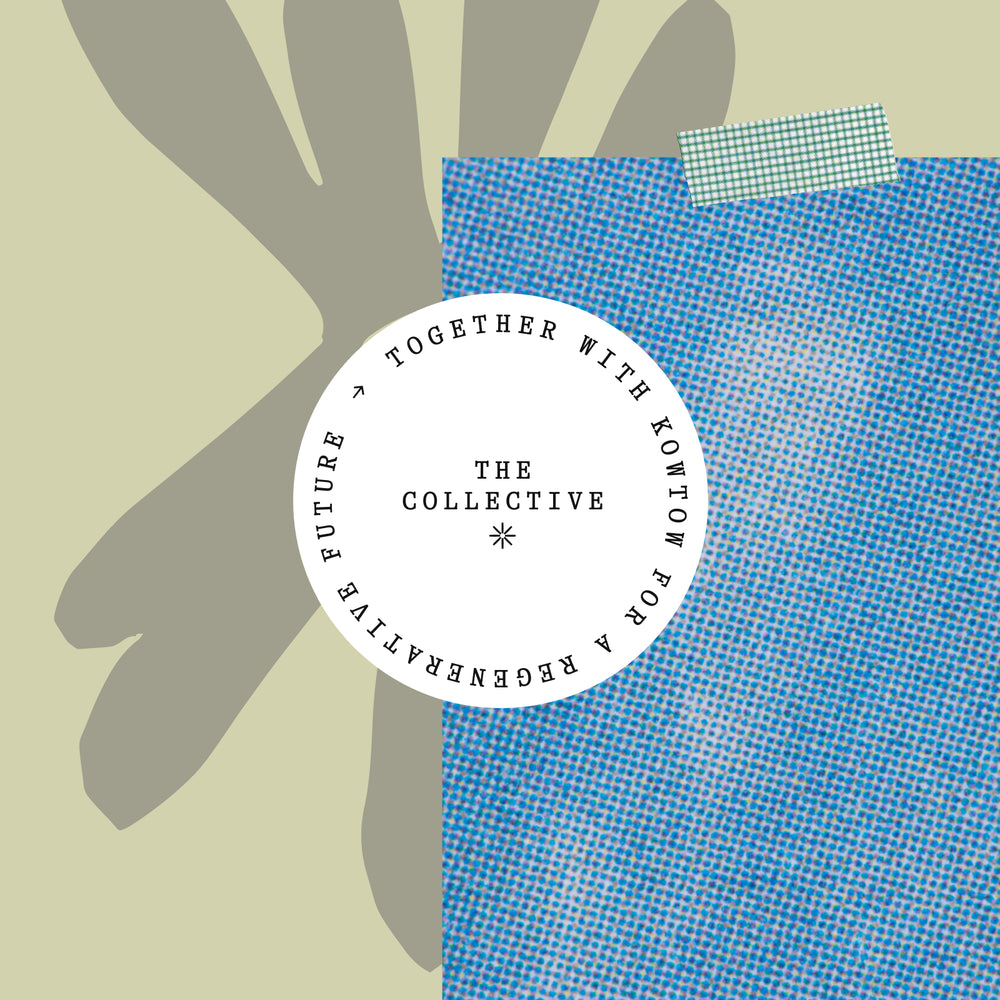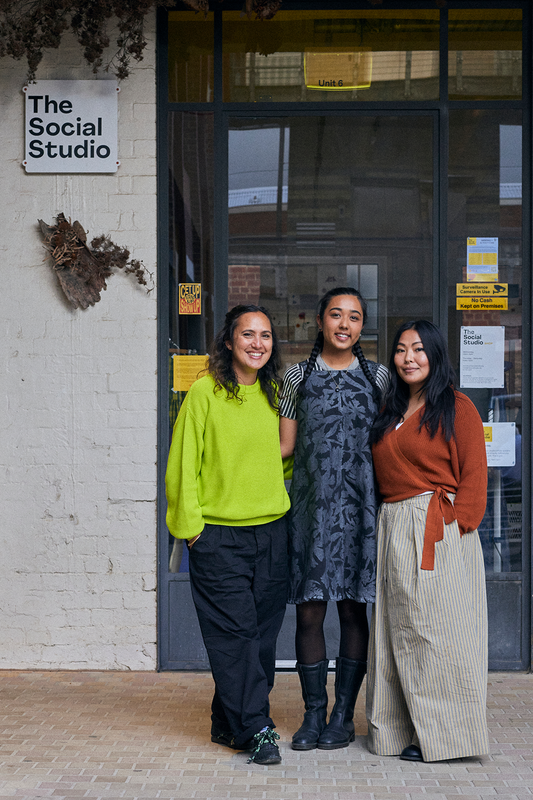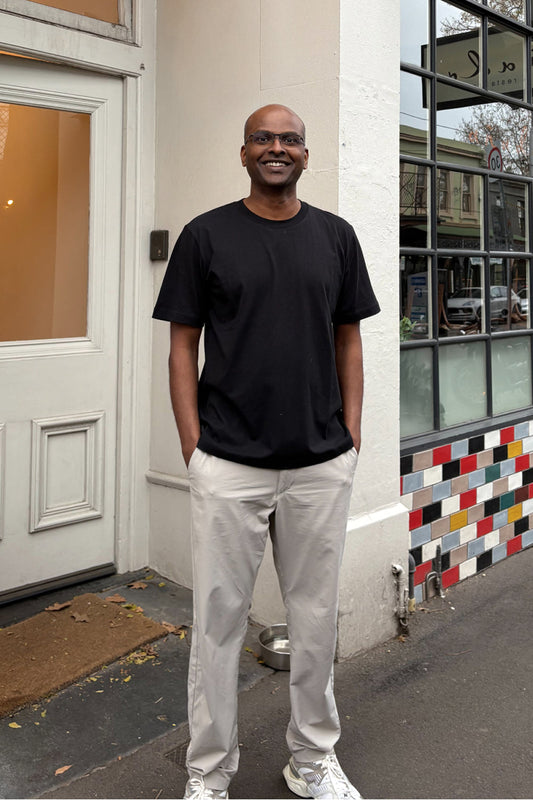As we enter this critical new decade, and remain immersed in coping with this unprecedented global pandemic, the urgency of the climate crisis, and therefore the importance of nature-based solutions in repairing the damage that we have done to the planet has become clearer. Our current fashion system is predicated upon a rapidly escalating TAKE > MAKE > WASTE linear system, fuelled by the demands of fast fashion, and is responsible for the depletion of resources, polluting ecosystems, social inequalities and generating catastrophic waste mountains. A quarter of our industry resources are wasted as fabric and garment leftovers, and around 500 billion US dollars worth of textile waste is landfilled or incinerated globally every year, according to the Ellen MacArthur Foundation. At the dawn of a critical new decade no one can now ignore the fact that ‘fashion business as usual’ is no longer an option...
The role materials can play in a more positive future is crucial; research undertaken by both the Kering Group and the Ellen McArthur Foundation shows us that up to 80% of a product’s environmental impact can be attributed to the material choice alone. From a sustainability perspective, materials really do matter; they represent the beginning of the design journey, embodying tactile promise, and expressing the creativity and substance of new fashion products. They also account for highly significant impacts across the supply chain, and generate 1.2 billion tonnes of CO2 emissions each year.
If raw materials are sourced from regenerative and restorative farming systems, the fashion industry can contribute towards mitigating the climate crisis and deliver benefits for nature and people. It is estimated that 30% of the need for climate action to remain within 1.5°C can be met through nature-based solutions, such as regenerative agriculture. Therefore, our materials play a significant role towards positive change, and may even offer restorative and regenerative benefits, by rebuilding soils and damaged ecosystems, protecting biodiversity, sequestering CO2, and providing communities with a stable living wage.
We need to urgently rethink our relationship with the resources that provide our mate- rial needs, and actively engage in positive sourcing and practices that diversify our fibre basket and limit and tackle waste streams intelligently. Currently our global fibre demand is dependent upon two polluting and highly unsustainable material sources; two-thirds of our materials are made from toxic petrochemicals, and over a quarter is made up of thirsty, pesticide and fertiliser-dependent conventionally farmed cotton, grown in unsustainable monocultures, and are still to this day associated with human rights abuses. Only around 1% of present cotton production is organically farmed, although that demand is on the increase.
Scientific consensus states that we urgently need to decouple from our dependency on fossil fuels, both as a raw material and as an energy source, and look to nature-based solu- tions to tackle our most pressing issues. Ingenious and sustainable use of alternative plant fibres can contribute to this much-needed material diversity, and the regenerative systems they are grown within can provide effective carbon sinks and havens for biodiversity.
In the materials world there are a plethora of approaches emerging that explore new sustainable material opportunities as solutions, for example; reclaiming waste, capturing carbon, innovations in the fields of biosynthetics and bio-fabricated materials, all spot-lighting the innovations that point to a new, more diverse material landscape; one that prioritises working in harmony with nature, respecting precious planetary resources, and seeks to reframe ‘waste’ as a valuable resource. These innovations exemplify a broad scope of new material possibilities, and demonstrate that there are potential solutions available to drive much-needed change. In recent years, we have seen a surge in research and development in these areas, along with a return to the best practice farming methods of traditional fibres.
FIBRES FROM NATURE
Many of our raw material requirements are fashioned from nature. We have depended for centuries on agriculturally grown materials, such as cotton, hemp, linen, and animal fibres. Returning to traditional fibres but using high-performance fibre technology, VentileTM textile technology produces an extra durable, waterproof and literally life-saving, mili- tary-tested textile from an extra-long staple, certified organic cotton. To ease our reliance upon cotton, hemp is reappearing, as it is an ecologi- cally positive plant to grow, low in water and pesticide demands, known to return nutrients to the soil, and absorb more CO2 per hectare than an equivalent sized forest.
WeganoolTM by Faborg uses a little known hollow cellulose fibre grown in abundance in arid areas of South India, without the need for fertilisers or pesticides. Another textile innovation is Bananatex®, created by revisiting a ‘forgotten’ historical fibre, and the identification of this raw material source, its low impact relationship with the natural world and the farming communities that harvest it, demonstrate that fashion can indeed have a positive impact. Made from sustainably grown banana plant fibres, it is a waterproof and durable fabric that is naturally biodegradable and fully circular. The fibres are from plants cultivated in the Philippines within a natural ecosystem of sustainable forestry. Its self-sufficiency has made it an important contributor to the reforestation of areas once eroded by palm plantations, whilst enhancing the prosperity of local farmers.
REPURPOSING AGRICULTURAL WASTE
Materials science company Circular Systems have identified that a staggering amount of agricultural waste is burnt or left to rot globally each year. This represents a pollution hazard and a valuable cellulose feedstock source, but also an innovation opportunity. They developed the AgraloopTM system and resulting BioFibreTM yarn from agricultural waste streams such as cane bagasse and oil seed fibre. Shocked by the environmental impact of commercial leather production, entrepreneur Carmen Hijosa founded Ananas Anam, as a responsible community project in the Philippines, and developed a durable vegan non-woven leather alternative Pinatex® from repurposed post-agricultural waste pineapple leaves. Mexican innovators Desserto® have created a vegan cactus biobased leather alternative that is grown on an organic plantation, respecting biodiversity, with low energy and water use.
CIRCULARITY
The need to both clean up our plastic pollution and de-couple from our dependency upon petroleum, both as an energy source and a material feedstock is an urgent imperative. Currently, we recycle only 9% of our plastics globally. Creating circular recycling systems requires innovation both at the material level and at the systems level, joining up networks between industries and creating infrastructures to repurpose plastic and textile waste streams. Innovators in this category are ingenious in identifying sources and systems for harvesting waste and repurposing it into high quality, functional and even luxurious fibres. By harvesting ocean plastic, PET bottles, recycled fishing nets, and plastic waste collected by networks of fishermen provide income from a different kind of catch. Innovators in this area include Parley who have produced an ocean plastic fibre, and Econyl® who coor- dinate networks of fishermen to retrieve and recycle ocean waste, which supports local communities to harvest marine plastic, in Europe and the west coast of Africa. Their fibre has a DNA tracer embedded within to verify the provenance of the material.
We are seeing ever more sophisticated recycling fibre technologies and options in all fibre categories - recycled cotton, wool, regenerated cellulosic, polyester and nylon textiles - but the share of fibre-to-fibre recycling is still very low (currently estimated at below 1 percent by the Ellen MacArthur Foundation). However, new fibre technologies such as Lenzing’s RefibraTM uses a portion of pre and post-consumer cotton with certified wood feedstock in a closed loop Lyocell process, spotlight the opportunities to use underutilised waste from scraps, and capture the value locked into our waste streams. Also, on the brink of commercial availability are a plethora of new technologies that are able to separate cotton and polyester blends at the molecular level and produce feedstocks for new-born cellulose and polyester fibres.
BIOFABRICATED INNOVATIONS
The nascent era of bio-fabricated materials is a relatively new category of man-made materials, created by harnessing biologi- cal organisms, working and designing with nature to form new, sustainable possibilities. The dawn of a new decade has seen innovations that have been in research and development for decades, and many are now poised to become commercially available. This category of materials manufacturing synthesises nature’s materials, providing new properties, and currently focuses on the potential of; ALGAE, MYCELIUM, BACTERIA and YEAST.
MYCELIUM
Awareness of the devastating impacts of intensive cattle farming, and the rapid growth in vegan lifestyles has led to a flourishing of mycelium leather alternatives. MycoTEX® by Neffa has developed engineered clothes from compostable mycelium mushroom roots, eliminating the need for chemicals and pesticides, and reducing water use by 99.5% compared to agricultural fibre crops. MycoWorks have created ReishiTM a fine leather alternative, which launched commercially in 2020. Biotech company Bolt Threads have launched MyloTM, which has attracted investment from Kering, Adidas and Stella McCartney. Ecovative also produces a mycelium leather alternative, MycoflexTM that can be engineered to grow in any shape or size.
ALGAE
Working at the intersections of science and design, Charlotte McCurdy has created an algae-based, carbon-negative biopolymer, exploring the role of material sources in sequestering carbon, and highlighting the need to stop putting fossil fuels back into our material feedstocks. Designer Cassie Quinn created an algae yarn that can be spun and knitted, or used as a fine thread for embroidery. It requires no heat when making, and is fully biodegradable. MarinaTex, by Lucy Hughes, is an award-winning domestically compostable bioplastic created from fish waste that replaces non-renewable, petrochemical-based plastic for packaging applications.
DESIGNING WITH MICRO-ORGANISMS
Synthetic spider silk has already attracted much attention and has been showcased at the V&A Museum in London. Created by identifying the spider DNA and replicating the protein through a yeast fermentation process, like brewing beer, it is then extruded using a wet spinning method. Those in the bioscience industry think spider silk could be the most significant technological fibre advance since nylon, and there are many other companies pursuing it commercially, such as AMSilk, producing and distributing silk biopolymers for use in textile products, medical and cosmetics applications.
Currently, our conventional dyestuffs are mostly made from petrochemicals. Responding to the urgent need for change in the fashion industry, Post Carbon Lab have created bacterial pigment dyeing and photosynthesis coating. The photosynthesis coating is a living layer of microorganisms that can be applied to textiles to enable active photosynthesis during the user phase; wearing a medium-sized T-shirt treated with the coating can generate 72.8% of the oxygen created by a tree in 24 hours! LVMH Award Shortlisted designer Piero D’Angelo’s project also explores the creation of dyes using a unicellular organism that feeds on bacteria, yeasts and funghi, producing different shades by altering the pH. The genus of this organism is not harmful to humans and can be kept alive through a ‘mother culture’, continually growing pigments.
These innovations represent examples of the diversity of solutions that point the way to more intelligent relationships with our material world. With awareness and understanding of the impacts of our choices and professional practices comes the impetus to act with care and responsibility. We look forward to embracing this new materials landscape, and the birth of responsible systems and models for a reimagined material future for fashion.
ABOUT THE AUTHOR
Amanda Johnston is curator and consultant at The Sustainable Angle, having curated the sustainable textiles collection and Future Fabrics Expo since its inception. She has a background in design consultancy and education, and has co-authored two books: Fabric For Fashion, and Fabric For Fashion The Swatch Book (both published 2010; 2nd edition 2014). Amanda teaches at the London College of Fashion, and regularly runs sustainable materials workshops, delivering presentations and seminars internationally, both at industry events and in educational forums. Amanda has a degree in Fashion Design from Kingston University.
@thesustainableangle
London, United Kingdom
FOOTNOTES
VENTILE
First developed by scientists at the Shirley Institute in Manchester, England. Extra-long-staple (ELS) cotton fibres are used to form a low-twist yarn, which is then woven into a tight high-density textile to create a 100% cotton fabric, capa- ble of providing an effective barrier against inclement weather. In wet weather the softly spun yarns - within the tight weave - dynamically expand to form an effective barrier against the elements.
ABACÁ
A species of banana native to the Philippines, is harvested for its fiber, also called Manila hemp, extracted from the leaf-stems. when Magel- lan made land in the Philip- pines in 1521, native peoples were already cultivating and harvesting abacá for use in traditional textiles.
INTERNET OF FUNGUS
Colloquially known as the WOOD-WIDE-WEB, mycorrhizal networks are underground networks that connect individual plants together and transfer water, carbon, nitrogen, and other nutrients and minerals. Mycelium play a key role in these networks, providing nutrients like phosphorus and nitrogen. It is estimated that close to 90% of plants are in mutually-beneficial relationships with fungi.





